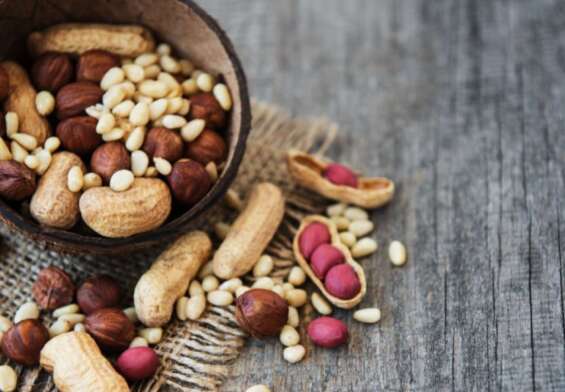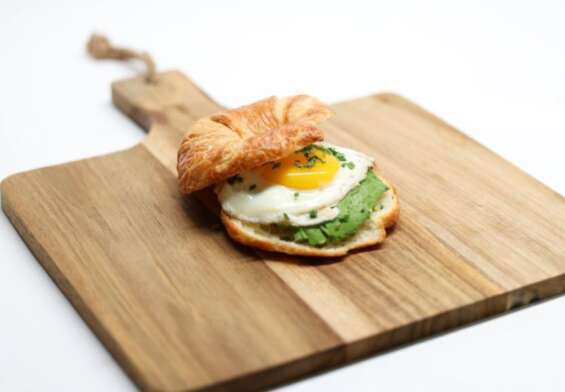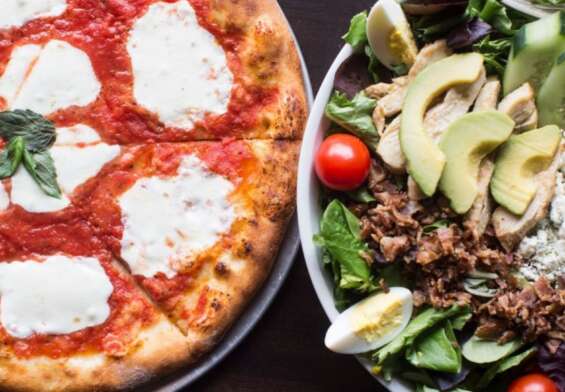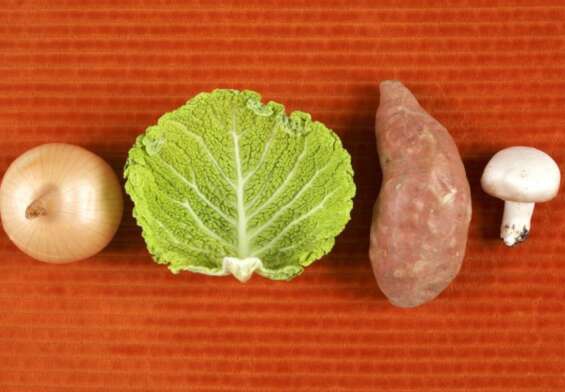
Macrobiotic Diet: Achieve Balance and Health Through Food
The Macrobiotic Diet is a plant-based diet that has been around for centuries, originating in Japan. It is based on the belief that food choices have an impact on the body, mind, and soul. The diet is centered around consuming whole, unprocessed foods, such as whole grains, beans, fruits, and vegetables, and minimizing processed and animal foods. The Macrobiotic Diet also emphasizes eating in balance and moderation, as well as being mindful of the energy of food and its properties. This diet can provide many health benefits, such as improving digestion, increasing energy levels, and promoting weight loss. Additionally, it can help reduce inflammation, decrease the risk of chronic disease, and support overall health and well-being.
How Macrobiotic Diets Can Help Improve Your Overall Health
The macrobiotic diet is one of the healthiest diets out there. But what does it involve, and how can it help improve your overall health? Well, if you’re looking for a way to improve your well-being, then this is the diet for you!
First of all, the macrobiotic diet is based on the principles of balance and moderation. It focuses heavily on whole grains, legumes, vegetables, and sea vegetables like seaweed. It also includes some fish, fruit, nuts, and seeds, but in moderation. The idea is to provide your body with the nutrients it needs while avoiding processed foods and artificial ingredients.
So how can this diet help improve your overall health? Well, for starters, it’s high in fiber, which can help reduce cholesterol and regulate blood sugar levels. It’s also packed with vitamins, minerals, and antioxidants, which can help boost your immune system and fight off disease. Plus, it’s low in fat, which can help you lose weight and maintain your ideal body weight.
But the benefits don’t stop there! Eating a macrobiotic diet can also improve your mental health. Its emphasis on whole, unprocessed foods can help boost your mood and reduce stress, while its focus on balance can help promote a sense of well-being and inner harmony.
So if you’re looking for a way to improve your overall health, then consider giving the macrobiotic diet a try. Sure, it might take some getting used to, but it’s definitely worth the effort. Who knows? You might even have some fun along the way!
The Benefits of Eating Whole Grains on a Macrobiotic Diet
Are you looking for a way to add some variety, nutrition, and humor to your macrobiotic diet? Look no further! Eating whole grains on a macrobiotic diet can provide you with all the nutrients your body needs to stay healthy, while also adding a bit of fun to your meal plan.
First of all, whole grains are an excellent source of protein, vitamins, minerals, and fiber. They’re also low in fat and calories, making them a great choice for those on a macrobiotic diet. Plus, eating whole grains can help reduce the risk of certain chronic diseases, like heart disease and diabetes.
Whole grains are also incredibly versatile. From quinoa and millet to spelled and brown rice, there’s a whole grain for every occasion. So, whether you’re making a pilaf, soup, or salad, you can easily add a nutritious whole grain to your meal.
But wait, there’s more! Eating whole grains can also be fun. With so many different types to choose from, you can get creative and experiment with different flavors and textures. For example, you can try cooking quinoa with vegetables and herbs for a flavorful side dish. Or, why not try making a sweet porridge of millet and maple syrup for breakfast? The possibilities are endless!
So, why not give whole grains a try on your macrobiotic diet? Not only are they nutritious and versatile, but they can provide you with a much-needed sense of fun and creativity in the kitchen. Who knows? You just might find your new favorite dish.
How to Transition to a Macrobiotic Diet
Are you ready to take the plunge into a world of macrobiotic diets? Well, you’ve come to the right place! Whether you’re a long-time macrobiotic devotee or a newbie looking to take the plunge, here’s a quick guide to transitioning to a macrobiotic diet with a humorous twist!
- Get creative with your meal planning. Macrobiotic diets involve eating mostly whole grains, legumes, vegetables, fruits, and nuts. So, instead of relying on the same old dishes, get creative and experiment with different combinations. You can even use your favorite recipes, just substitute the meat and dairy for plant-based alternatives.
- Stock up on macrobiotic staples. To ensure that you have the essential ingredients for a macrobiotic diet, stock up on whole grains like brown rice, quinoa, and millet, as well as dried pulses like beans, lentils, and chickpeas.
- Get familiar with sea vegetables. Sea vegetables are a great source of minerals and are also packed with flavor. Try different types of seaweed like nori, kelp, and wakame and use them to make salads, soups, and stir-fries.
- Start adding fermented foods to your diet. Fermented foods like miso, tempeh, and sauerkraut are an essential part of a macrobiotic diet. They provide beneficial bacteria that help to keep your gut healthy and can also help to boost your immune system.
- Make sure you’re getting enough nutrients. A macrobiotic diet can be low in protein, so make sure you’re getting enough from foods like nuts, seeds, tempeh, and tofu. If you’re vegan, consider adding a plant-based protein supplement to your diet.
- Have fun with it! The best way to transition to a macrobiotic diet is to have fun with it. Experiment with different flavors and ingredients and enjoy the process.
Now that you know how to transition to a macrobiotic diet, you’re ready to start your journey! Bon appetite!
Exploring the Origins and History of Macrobiotic Diets
Ah, the mysterious and elusive Macrobiotic diet – it’s been around for centuries, but still remains a bit of a mystery to many. Whether you’re looking to lose weight, boost your health, or just explore a new way of eating, this diet has something for everyone. But first, let’s explore the origins and history of the Macrobiotic diet.
Macrobiotics has its roots in ancient Asian philosophy. It comes from the Greek words “macros,” meaning large, and “bios,” meaning life. The diet emphasizes balance and harmony with the environment and emphasizes whole grains, beans, vegetables, and other natural foods. It also includes fish, seaweed, and other sea vegetables.
The modern practice of Macrobiotics began in the early 20th century with the teachings of Japanese philosopher George Ohsawa. He recommended a diet of whole grains, vegetables, and miso soup, and stressed the importance of eating in season and avoiding processed foods. Over the years, Macrobiotics has evolved to include more plant-based foods and less animal protein.
Today, Macrobiotics is still a popular way of eating, but it has become more flexible and diverse. It has been adapted to fit different lifestyles and eating habits and is no longer limited to just whole grains, vegetables, and miso soup. Instead, the focus is still on balance and harmony with the environment, but with more emphasis on variety and moderation.
So whether you’re looking for a new way to lose weight, boost your health, or just explore a new way of eating, Macrobiotics is worth exploring. And who knows? Maybe you’ll find the perfect balance between ancient philosophy and modern-day healthy eating.
What Foods to Avoid on a Macrobiotic Diet
Are you looking for a new diet that will make you feel like a new person and make others around you jealous? Well, you’ve come to the right place! Introducing the Macrobiotic Diet, the diet that will make you look like a million bucks and make you feel like a million bucks too! But before you dive headfirst into this new diet, there are a few things you should know.
First and foremost, there are certain foods you should avoid. So, without further ado, here are the top 10 foods to avoid on the Macrobiotic Diet:
- Chocolate: Sure, it may taste delicious, but it’s full of sugar and fat, which are both no-nos on the Macrobiotic Diet.
- Cheese: Sorry cheese lovers, but cheese is too high in fat and cholesterol to be part of a Macrobiotic Diet.
- Coffee: This may be hard to give up, but caffeine is a big no-no on the Macrobiotic Diet.
- Alcohol: Alcohol is full of empty calories and can disrupt your diet goals, so it’s best to avoid it.
- Processed foods: Processed foods are full of chemical additives and preservatives, so they’re best avoided.
- Refined sugar: Refined sugar will only add empty calories to your diet, so it’s best to avoid it.
- Red meat: Red meat is high in fat and cholesterol, so it’s best avoided on the Macrobiotic Diet.
- Fried foods: Fried foods are full of unhealthy fats, so they’re best avoided on the Macrobiotic Diet.
- Dairy: Dairy is high in fat and cholesterol, so it’s best to avoid it on the Macrobiotic Diet.
- White bread: White bread is full of empty calories, so it’s best to avoid it on the Macrobiotic Diet.
So, there you have it! Now that you know what foods to avoid, you can get started on your Macrobiotic Diet journey!
The Benefits of Eating Locally-Sourced Foods on a Macrobiotic Diet
If you’re looking to spice up your macrobiotic diet, look no further than locally-sourced foods! Eating locally-sourced foods on a macrobiotic diet is beneficial in more ways than one. From improved flavor to more varied meals, the advantages of eating locally-sourced foods will make you look at macrobiotic eating in a whole new light.
For starters, you can’t beat the flavor of locally-sourced produce. The freshness of locally-sourced foods gives them an unbeatable flavor that you simply won’t get from store-bought foods. Plus, you’ll be able to enjoy the unique flavors of the region you’re in, which can help make your macrobiotic diet more enjoyable.
Eating locally-sourced foods is also a great way to add variety to your macrobiotic diet. Local farmers often have a wide variety of seasonal produce, so you’ll be able to enjoy a wider range of flavors and textures. This can help keep your macrobiotic diet from getting boring, as you’ll be able to explore new recipes and ingredients.
Finally, you’ll be doing your part to support the local community. When you buy locally-sourced foods, you’re supporting the farmers in your area. This helps to keep money in the local economy and can even help to create jobs in the area. Plus, you’ll be reducing your carbon footprint, as locally-sourced foods have a much lower transportation cost than store-bought foods.
So, if you’re looking for a way to make your macrobiotic diet more interesting and beneficial, look no further than locally-sourced foods. With their unbeatable flavor, variety, and support of the local economy, it’s no wonder why many people swear by eating locally-sourced foods on a macrobiotic diet. Bon appetit!
Cooking with Whole Grains on a Macrobiotic Diet
Cooking with whole grains on a macrobiotic diet can be tasty and fun – even if you don’t think you’re the most talented chef in the kitchen. Sure, you may think you’re doomed to a life of bland, boring meals. But, guess what? We’re here to change your mind!
Let’s start by talking about the mainstay of the macrobiotic diet: whole grains. We’re talking about oats, buckwheat, brown rice, millet, quinoa, and other whole grains. They’re packed with nutrients and fiber, and they form the basis of many delicious macrobiotic meals.
Now, let’s get to the fun part: cooking. When it comes to whole grains, you’ve got a few options. You can cook them in a pot with some water and a pinch of salt. Or, if you’re feeling adventurous, you can try your hand at something a little more creative.
For example, you could try making your own macrobiotic version of risotto. Start by sautéing some garlic and onions in olive oil. Then, add some cooked grains and stir in some vegetable stock. As the risotto cooks, stir in some nutritional yeast and some fresh herbs of your choice. Serve it with a sprinkle of parmesan cheese, and you’ve got yourself a delicious and nutritious meal.
Or, if you’re in the mood for something a little more exotic, why not try your hand at a macrobiotic version of paella? Start by sautéing some vegetables in olive oil, then add some cooked grains and some broth. As the paella cooks, stir in some spices, such as saffron, oregano, and paprika. Serve it with a spritz of lemon juice and some fresh parsley, and you’ve got yourself a flavorful, nutritious meal.
Cooking with whole grains on a macrobiotic diet doesn’t have to be boring. With some creativity, you can make some delicious and nutritious meals that are sure to please even the pickiest of eaters. So, grab your apron and get cooking!
How to Incorporate Fermented Foods into Your Macrobiotic Diet
Welcome to the wonderful world of fermentation! Fermented foods are a great way to add flavor and probiotic goodness to your macrobiotic diet. Here are some tips on how to get the most out of your fermented food experience.
First, get creative with your ingredient selection. Fermented foods can range from traditional favorites like sauerkraut and kimchi to more exotic options like kombucha and kefir. Experiment with different flavors and see what works best for your palate.
Second, incorporate fermented foods into your meals. Use them as a condiment, a side dish, or even as an ingredient in a recipe. You can also try making your own fermented foods at home with a few simple ingredients.
Third, get creative with your presentation. Fermented foods make a great addition to a macrobiotic meal. Try wrapping them in nori or adding them to salads and grain bowls. You can even use them as a topping for your favorite macrobiotic dishes.
Finally, don’t be afraid to get creative with your flavors. Fermented foods are a great way to add a bit of zing to your macrobiotic meals. From spicy kimchi to tangy sauerkraut, you can create all sorts of interesting flavor combinations.
So what are you waiting for? Get fermenting and start enjoying the probiotic goodness of fermented foods!
Smoothies for Breakfast: A Macrobiotic Approach
Start your day off with a big, healthy, and delicious macrobiotic smoothie! Whether you’re a morning person or not, there’s no denying that smoothies are the perfect way to kick-start your day. Not only are they energizing, they’re also packed with essential vitamins and minerals, and they can be made with all kinds of delicious and nutritious ingredients. Plus, they’re super easy to make. All you need is a blender and some creative ideas!
If you’re looking to try something a little different, why not go macrobiotic? With macrobiotic smoothies, you can get all the benefits of a traditional smoothie while adding a unique twist. Here are some tips and tricks to make the most of your macrobiotic breakfast.
First, make sure you’re using the freshest ingredients possible. Macrobiotic smoothies are all about taking the time to enjoy fresh, seasonal fruits, vegetables, nuts, and seeds. Aim for organic whenever possible, and if you’re feeling adventurous, you can even try foraging for wild ingredients.
Next, get creative with your flavor combinations. Go beyond the usual fruit and veggie combos and try blending things like beans, grains, and sea vegetables. Even better, you can make your own unique sauces and dressings to add a bit of zing to your smoothie.
Finally, don’t forget to have fun! Macrobiotic smoothies can be a great way to experiment with new flavors and ingredients. So don’t be afraid to get creative, have a laugh, and make something that’s truly your own.
So what are you waiting for? Get your blender fired up, and start your day off right with a macrobiotic smoothie breakfast!
What Is the Recommended Macrobiotic Plate?
Are you ready to channel your inner Zen master with a macrobiotic plate? A macrobiotic plate is a balanced meal of grains, vegetables, and proteins that focuses on foods that are in season, organically grown, and locally sourced. It’s the perfect way to fill your plate with nutritious and delicious foods!
Here’s what you’ll need for the ultimate macrobiotic plate:
Start with a base of whole grains, such as brown rice, quinoa, buckwheat, or barley. Then, top it off with a variety of cooked and raw vegetables, such as spinach, broccoli, carrots, and cabbage. For some added protein, throw in a few slices of tempeh or tofu. And, don’t forget the pickled vegetables and seaweed salad! Finally, top off your plate with a dollop of miso soup and a sprinkle of sesame seeds.
And there you have it – the perfect macrobiotic plate! Bon appetite!
Tips for Eating Out on a Macrobiotic Diet
- Get creative with your order. Ask your server to make a custom macro meal with a mix of grains, vegetables, and beans.
- Don’t be afraid to ask questions. Get to know the chef and what ingredients they’re using.
- Go for the veggie side dishes. If there’s a side of steamed vegetables or a salad bar, go for it.
- Look for the macro-friendly options on the menu. Ingredients like brown rice, seaweed, and miso soup can all be found on a macrobiotic menu.
- Make sure to skip the dairy and processed foods. These are not part of a macrobiotic diet.
- Ask for a macro-friendly condiment. Substitute regular soy sauce with tamari, and skip the mayo and butter.
- Don’t forget to order a side of pickles. Pickles are a macrobiotic staple, so make sure to get some on the side.
- Have fun with it. Eating out on a macrobiotic diet doesn’t have to be boring or restrictive. With a little creativity, you can enjoy a delicious and healthy meal!
Conclusion
In conclusion, the Macrobiotic Diet is a diet that focuses on healthy, natural, whole foods that are in balance with nature. It offers a variety of health benefits, including improved digestion, better mental clarity and focus, and more energy. It is a lifestyle that emphasizes mindful eating and living in harmony with nature. While it may not be for everyone, it offers an alternative way of eating that can be beneficial for those looking for a healthier, more conscious way of eating.











